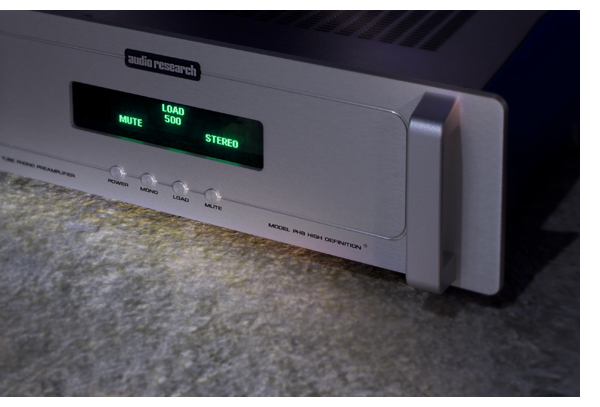The good news is that a few hundred dollars grants you access to the analog world. But should you become truly obsessed, you’ll require a better analog front end. Not to worry. Competition is fierce in the $100-$300 phono preamplifier segment, with fewer great choices in the $500-$800 range. Moving to the $1,000-$2,000 plateau offers not only a huge performance jump, but one of the most intense product rivalries in the high end. If you can stretch to this section of the game board, you will be given much more than a get-out-of-jail-free card. To wit, the $1,595 AVID Pulsus. It’s designed, built, and tested at the company’s UK facility. Many other units in its price range come from China.
Matching a phonostage like the AVID Pulsus with a favorite turntable and cartridge for a sum total of a couple thousand dollars will yield a very formidable analog source. Better still, it allows many wallet-conscious listeners to steer clear of megabuck turntables. Such a setup offers more than enough resolution to enjoy the best LPs. Plus, you’re only one Internet forum post away from a healthy argument.
A compact two-box design, the Pulsus allows you to place the power supply about three feet away from the actual preamplifier chassis, thus eliminating noise concerns. Said power supply connects to the preamplifier via a shielded cable with an XLR connector. Unlike AVID’s Pulsare phonostage, which features balanced inputs and a balanced design, the Pulsus is single-ended. Designer Conrad Mas insists that the unit isn’t a “stripped-down Pulsare,” yet a comparison of both models reveals a remarkably similar tonal balance.
When listening to both side by side with smaller-scale acoustic music, the two AVID preamplifiers sounded far more alike than different. However, the Pulsare’s superiority is made evident on symphonic and heavy metal fare. Such traits will appeal to those wanting to “stay in the family.” Why? Should you decide to move up to the Pulsare at some point, you will be rewarded with more instead of different—just as you do with the full line of AVID turntables.
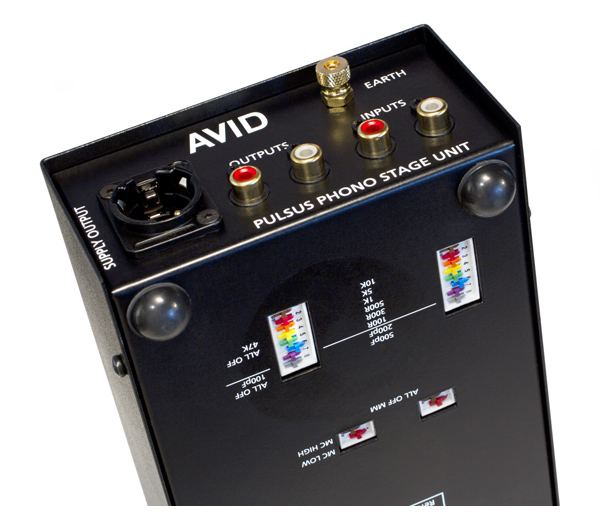 Setup
Setup
Underneath the chassis, the Pulsus offers a wide range of adjustment, with three gain settings: 48db for MM cartridges, 60db for MC, and an additional 70db setting as well. Combined with the Pulsus’ ultra-low noise floor, even the low-output Dynavector 17D3 cartridge (.23mv output) had no trouble delivering. For MM users, the three available capacitance settings (100pf, 200pf and 500pf) should easily handle most combinations.
Listening began with a suite of reasonably priced cartridges that included the Shure V15vxmr, Denon DL-103R, and Dynavector DV-20xl. All turned in great performances and, in conjunction with the Volvere SP/SME combination, sounded better than when in my budget setup consisting of the Rega P3-24 and Dynavector P75 mk. 2. Feeling that the Pulsus was capable of more, I substituted the Sumiko Pearwood Celebration II MC cartridge ($2,499) and discovered the AVID still held its own. Thanks to a removable head shell on the SME309 arm, swapping the Pearwood for the Sumiko Palo Santos cartridge ($3,999) was as simple as opening a beer. The Pulsus still yielded enough resolution to tell the difference between the two cartridges, but distinctions were more easily discernible via the Pulsare. Such performance makes for a phono preamplifier with which you should be able to grow through several rounds of cartridge/turntable upgrades.
Please note: Both of the Sumiko cartridges were optimally loaded at 100 ohms with my ARC REF Phono, yet 2,300 ohms suited the Pulsus. As with any cartridge, experimentation always leads to the best results.
Listening
Unlike the Pulsare, which took a week of continuous play to fully blossom, the Pulsus required just 48 hours to come out of its shell. Only slightly congested upon first turn-on, it quickly became a great performer. And since it draws about 10 watts, leave the Pulsus on to maximize your analog experience.
Blondie’s Autoamerican came alive with both the AVID Volvere SP/SME 309 and Rega P9 turntables, each boasting an identical Sumiko Pearwood Celebration II cartridge. While Blondie’s 1980 set is fairly dense and somewhat compressed, marginal LPs can sometimes be more telling of a phono preamplifier’s capability than meticulously mastered audiophile pressings. In this case, “Rapture” extended more pace and depth than I’m used to experiencing with other similarly priced phonostages.
KISS’ Alive! is another LP with very limited dynamic contrast, but again, the Pulsus impressed. The highly processed drum solo during “100,000 Years” actually had life and dimension, effortlessly revealing the differences between the US and Japanese pressings—a revelation that confirms the Pulsus as a serious audiophile tool.
As expected, the Pulsus shined when playing pristine recordings. Classic Records’ remaster of Crosby, Stills and Nash’s self-titled debut had so much depth, it prompted one of my audiophile pals to look behind the equipment rack to be sure that the Volvere wasn’t plugged into the adjacent Audio Research PH6. “Are you sure it doesn’t have at least one tube inside?,” he repeatedly asked, inspired by the natural presentation. The PH6 is similar in the sense that it does not sound overly tubey. Akin to its more expensive Pulsare, AVID managed to create a solid-state phonostage that’s both resolving and quiet, and yet not at all harsh.
The Pulsus’ wide dynamic range is another welcome treat. Music Matters’ recent pressing of Sonny Rollins’ Newk’s Time pinned me back in the listening chair. As Rollins’ sax blasted from between the speakers, felt like I was the dude in the famous Maxell ad. With the turntable already in 45RPM mode, there was no reason not to blitz through my growing 12-inch maxi-single collection. Spread onto the whole side of an album, the Scorpions’ “Rock You Like a Hurricane” volunteered crushing guitars that convincingly approximated the live experience. In addition to verifying that there are many well-produced hip-hop tracks, Eazy-E’s “We Want Eazy” proved that the Pulsus indeed goes deep and advances a highly convincing bass groove.
Comparisons
The Pulsus holds its own amidst a sea of comparably priced products. The Lehman Black Cube SE, a previous favorite in the $1,500-$2,500 solid-state category, doesn’t claim the AVID’s bass grip or expansive soundstage. Another favorite, the EAR 834P, is almost the polar opposite of the AVID. Whereas the EAR puts a warm, romantic feel on everything—great if you have an overly forward-sounding cartridge/system—the AVID gives you what’s on the recording, with an excellent sense of pace that leaves the valve unit, by comparison, sounding slow.
On a related note, the Pulsus’ best aspect is its overall natural tonal balance, which makes it painless to integrate it into any system. By merely revealing the nature of the equipment to which it’s connected, it has neither a forward, etched character nor a warm, embellishing one.
The Verdict
The AVID Pulsus builds on the Pulsare’s success, offering high performance at a more accessible price, and combining neutral tonal balance with excellent resolution and a high degree of dynamic contrast without going so far as to become harsh. Moreover, its low noise floor and ease of adjustability put it at the top of its respective price class. If you’d like to skip the pointless Internet banter and get down to the business of listening to records, head to your dealer and sample the Pulsus. I’m guessing you’ll take one home.
The AVID Pulsus
MSRP: $1,599
Manufacturer: http://www.avidhifi.co.uk
US Importer: Music Direct Click here for more info
 My AVID Acutus Reference SP/SME V/Koetsu Urushi Blue proved a perfect match for the Vendetta, which only allows the input loading to be varied from 20 to 200 ohms. It took 24 hours for the last touch of haze on the top end to disappear, but once it did, yow!
My AVID Acutus Reference SP/SME V/Koetsu Urushi Blue proved a perfect match for the Vendetta, which only allows the input loading to be varied from 20 to 200 ohms. It took 24 hours for the last touch of haze on the top end to disappear, but once it did, yow! A peek underneath the chassis reveals a tidy printed circuit board, premium parts, and a well-shielded power transformer. Nothing is overdone on this old-school design. An extremely handy back-panel switch lets you float the ground. Hum is the enemy of low-level phono signals, and it’s not uncommon to still have 60hz enter the picture no matter how careful you are with everything else. This little switch brings you back to absolute silence. I wish more manufacturers would include one.
A peek underneath the chassis reveals a tidy printed circuit board, premium parts, and a well-shielded power transformer. Nothing is overdone on this old-school design. An extremely handy back-panel switch lets you float the ground. Hum is the enemy of low-level phono signals, and it’s not uncommon to still have 60hz enter the picture no matter how careful you are with everything else. This little switch brings you back to absolute silence. I wish more manufacturers would include one. Plenty of Punch
Plenty of Punch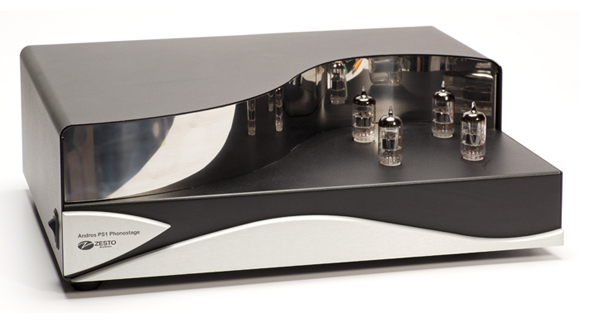 Go with the flow
Go with the flow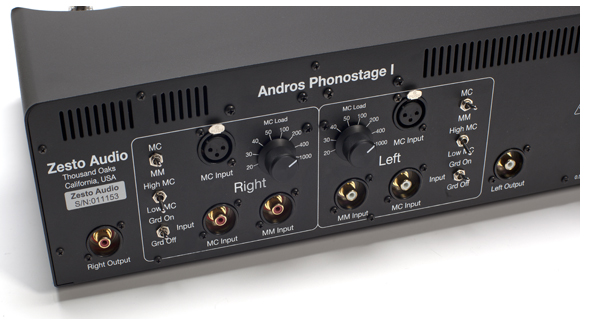 Nothing but good news
Nothing but good news It’s been a long time since Burmester has produced a phono stage.
It’s been a long time since Burmester has produced a phono stage.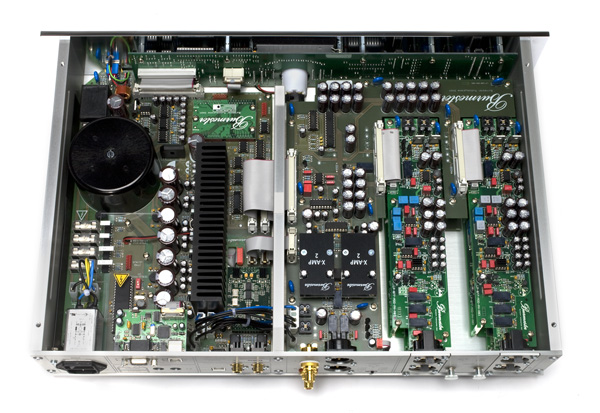 The subsonic filter worked well with a few older, more warped records that have not had a session with the Furutech flattener yet and I was unable to hear any difference in low frequency output. If the wide range of gain settings still isn’t enough, the 100 has the ability to boost the output by an additional 6db, so there should never be a situation where the 100 Phono does not possess enough gain.
The subsonic filter worked well with a few older, more warped records that have not had a session with the Furutech flattener yet and I was unable to hear any difference in low frequency output. If the wide range of gain settings still isn’t enough, the 100 has the ability to boost the output by an additional 6db, so there should never be a situation where the 100 Phono does not possess enough gain. All controls are easily available on the front panel and clearly marked, so finding the proper loading and gain settings for your cartridge couldn’t be easier. If you have multiple turntable/cartridge owners will be instantly at ease with this flexibility that few other phono stages match.
All controls are easily available on the front panel and clearly marked, so finding the proper loading and gain settings for your cartridge couldn’t be easier. If you have multiple turntable/cartridge owners will be instantly at ease with this flexibility that few other phono stages match.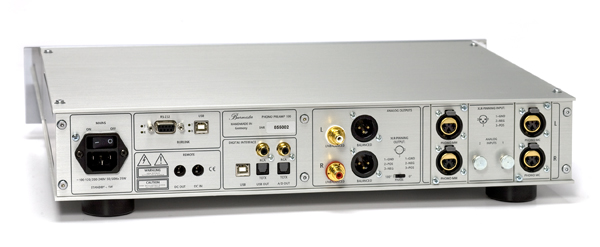 Burmester feels that keeping the signal path balanced all the way through, so the 100 only has balanced inputs. This will require cable retermination or using the supplied XLR to RCA adaptors. Considering the additional benefit to running a phono cartridge balanced, I would highly suggest having your tonearm cable terminated for balanced operation. I used a Cardas Clear Phono cable and the Burmester Silver Balanced Phono Cable ($1,595) The Burmester cable was perhaps a bit too revealing for my taste, but again like any other cable, this is a tone control that needs to be fitted to your taste.
Burmester feels that keeping the signal path balanced all the way through, so the 100 only has balanced inputs. This will require cable retermination or using the supplied XLR to RCA adaptors. Considering the additional benefit to running a phono cartridge balanced, I would highly suggest having your tonearm cable terminated for balanced operation. I used a Cardas Clear Phono cable and the Burmester Silver Balanced Phono Cable ($1,595) The Burmester cable was perhaps a bit too revealing for my taste, but again like any other cable, this is a tone control that needs to be fitted to your taste.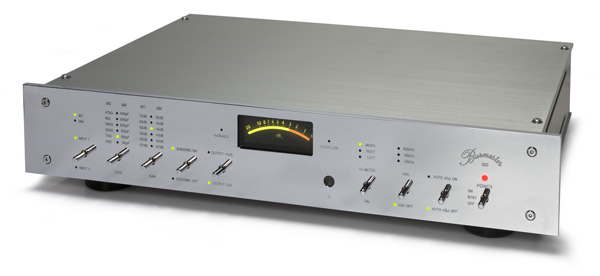

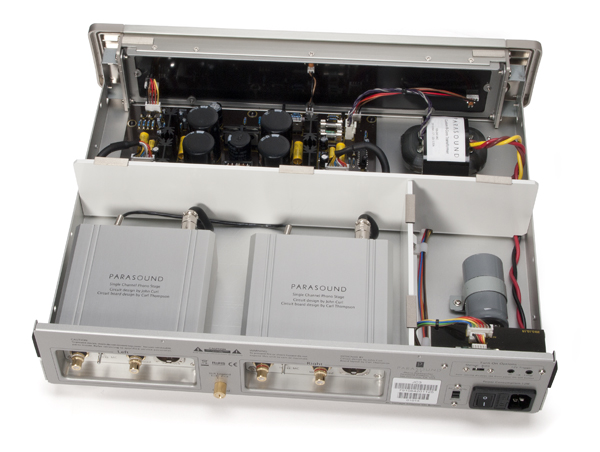 The Sound
The Sound Singular in Purpose
Singular in Purpose Redefines Quiet
Redefines Quiet Back to Basics
Back to Basics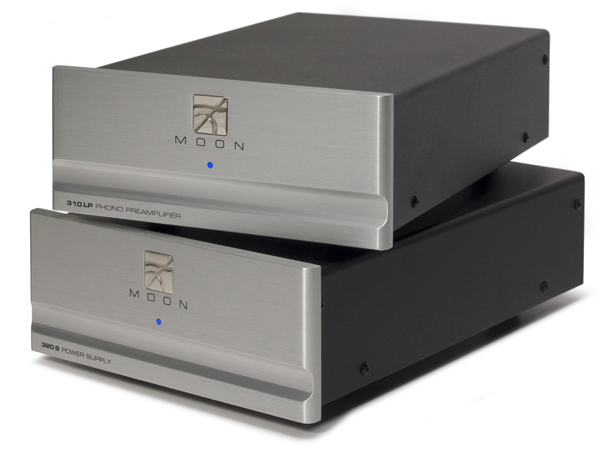 Manufacturer Information
Manufacturer Information Features Are More Than a Curiosity
Features Are More Than a Curiosity Loud and Clear
Loud and Clear Monk Audio Phonostage
Monk Audio Phonostage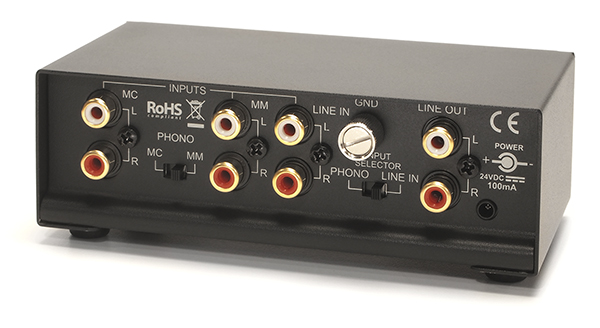 Excels With Digital Transfers
Excels With Digital Transfers If silence is golden, the XP-25 has definite bullion-like qualities. For one thing, it doesn’t produce hiss or buzz. The black backgrounds are sensational. The lack of grit or noise allows the ear to relax on what amounts to a sonic pillow. There’s no hunching of the shoulders waiting for an aggressive treble transient to hit here, the kind that makes you wonder whether if it wouldn’t be saner just to listen to the car radio rather than trying to dial in a high-end system.
If silence is golden, the XP-25 has definite bullion-like qualities. For one thing, it doesn’t produce hiss or buzz. The black backgrounds are sensational. The lack of grit or noise allows the ear to relax on what amounts to a sonic pillow. There’s no hunching of the shoulders waiting for an aggressive treble transient to hit here, the kind that makes you wonder whether if it wouldn’t be saner just to listen to the car radio rather than trying to dial in a high-end system.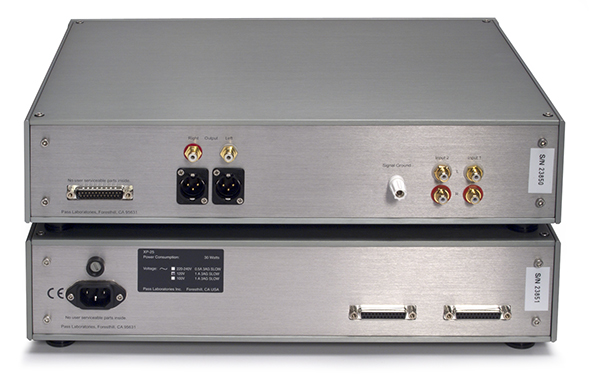 Does the lack of tubes mean that its sound, as audiophiles are wont to say, is too “solid-state”? No. Intriguingly, the XP-25 sounds more tubey than some tubed units. Consider the recent remaster of Shelby Lynne’s Just a Little Lovin’. On the cut “Anyone Who Had A Heart,” her voice is smoother and more seductive than through some tubed units I have heard. How Pass pulls off this feat is an interesting question. Capacitors or wire or circuit design? I presume Pass would answer “all of the above.” Whatever the technical response, the XP-25 definitely does not fall into the lean or astringent camp. Quite the contrary.
Does the lack of tubes mean that its sound, as audiophiles are wont to say, is too “solid-state”? No. Intriguingly, the XP-25 sounds more tubey than some tubed units. Consider the recent remaster of Shelby Lynne’s Just a Little Lovin’. On the cut “Anyone Who Had A Heart,” her voice is smoother and more seductive than through some tubed units I have heard. How Pass pulls off this feat is an interesting question. Capacitors or wire or circuit design? I presume Pass would answer “all of the above.” Whatever the technical response, the XP-25 definitely does not fall into the lean or astringent camp. Quite the contrary.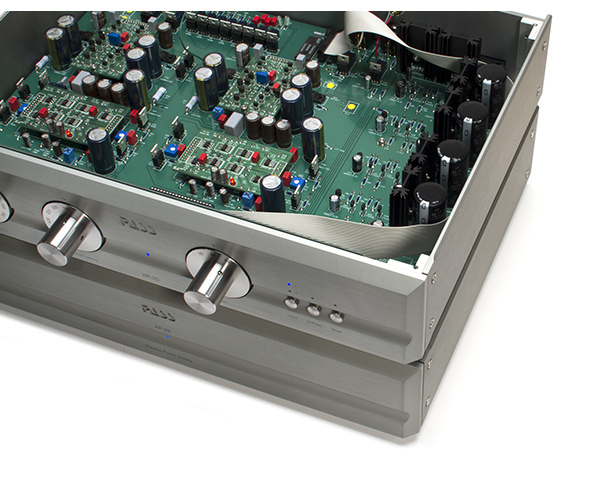 Additional Comments
Additional Comments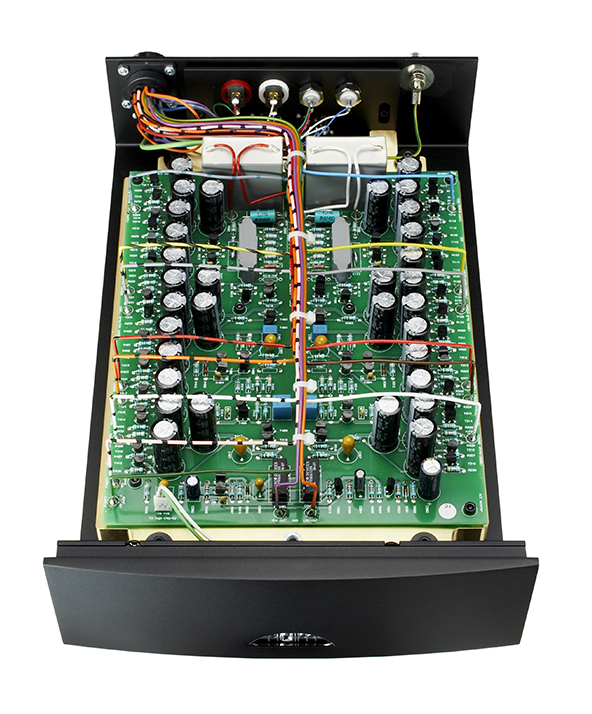 Powerful Options
Powerful Options Lightning fast setup
Lightning fast setup Snaic or Burndy?
Snaic or Burndy? The Superline had plenty of hours on its clock from using it for the SuperNait review, and I thought I was very familiar with the sound. But after the addition of the SuperCap2, I was on another planet. I haven’t been this impressed with a phono preamplifier since the famous Vendetta Research of the ’80’s, which was the last time I had a major paradigm shift in analog listening. In my system, the Superline/SuperCap2 opened the window to the music wider than it has ever been.
The Superline had plenty of hours on its clock from using it for the SuperNait review, and I thought I was very familiar with the sound. But after the addition of the SuperCap2, I was on another planet. I haven’t been this impressed with a phono preamplifier since the famous Vendetta Research of the ’80’s, which was the last time I had a major paradigm shift in analog listening. In my system, the Superline/SuperCap2 opened the window to the music wider than it has ever been. Super squared
Super squared It should be noted that Red Wine doesn’t just pack the Ginevra with a bunch of “D” cells and call it a day. No, the preamp boasts state-of-the-art 25.6-volt “Lithium Iron Phosphate” (LFP) battery technology. These low-impedance battery packs are exclusively manufactured for Red Wine Audio and designed for long life. The battery pack includes a built-in, custom-designed cell management board that balances individual battery cells, both optimizing reliability and battery pack performance. The pack is also user-replaceable, and doesn’t require any soldering to install.
It should be noted that Red Wine doesn’t just pack the Ginevra with a bunch of “D” cells and call it a day. No, the preamp boasts state-of-the-art 25.6-volt “Lithium Iron Phosphate” (LFP) battery technology. These low-impedance battery packs are exclusively manufactured for Red Wine Audio and designed for long life. The battery pack includes a built-in, custom-designed cell management board that balances individual battery cells, both optimizing reliability and battery pack performance. The pack is also user-replaceable, and doesn’t require any soldering to install. With the Ginevra, record surface noise, clicks, and pops are not necessarily lower in level, but they recede into the background more than they did with my Whest. And the Ginevra’s deft portrayals of the quieter parts in music are remarkable in their own right; dynamic shadings and expressive nuance really shine through. In short, music sounds more natural and less like hi-fi. Always a good thing.
With the Ginevra, record surface noise, clicks, and pops are not necessarily lower in level, but they recede into the background more than they did with my Whest. And the Ginevra’s deft portrayals of the quieter parts in music are remarkable in their own right; dynamic shadings and expressive nuance really shine through. In short, music sounds more natural and less like hi-fi. Always a good thing. Red Wine Audio Ginevra LFP-V Edition Phono Preamplifier
Red Wine Audio Ginevra LFP-V Edition Phono Preamplifier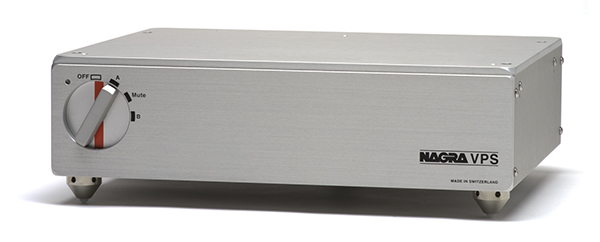 The VPS has a small enclosure similar to the PL-L linestage (and identical in footprint), without the big meter on the front. It merely has a standard Nagra rotary switch with three positions; A, B and mute. Yes, the VPS has two inputs folks, and that what catapults it straight to the top of my list. I have too many turntables to live with a single input phono preamplifier.
The VPS has a small enclosure similar to the PL-L linestage (and identical in footprint), without the big meter on the front. It merely has a standard Nagra rotary switch with three positions; A, B and mute. Yes, the VPS has two inputs folks, and that what catapults it straight to the top of my list. I have too many turntables to live with a single input phono preamplifier.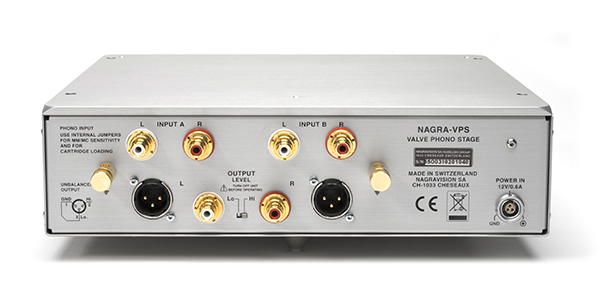 Each of the inputs on the VPS can be configured for MM or MC cartridges, utilizing different cards to achieve the proper amount of gain. The VPS can actually be a hybrid phono stage, with an additional solid state gain stage that you can switch in via the back panel. Those with line stages in the 12-20 db range should be able to use the tube section without additional gain. It offers 34 dB of gain and a maximum output of about 0.3V. The CJ Act 2/series 2 has 21.5db of gain, allowing the VPS to shine in tube mode.
Each of the inputs on the VPS can be configured for MM or MC cartridges, utilizing different cards to achieve the proper amount of gain. The VPS can actually be a hybrid phono stage, with an additional solid state gain stage that you can switch in via the back panel. Those with line stages in the 12-20 db range should be able to use the tube section without additional gain. It offers 34 dB of gain and a maximum output of about 0.3V. The CJ Act 2/series 2 has 21.5db of gain, allowing the VPS to shine in tube mode. Those changing cartridge loading often, will might grump at having to take the cover off the VPS and use the supplied pliers to set the tiny jumpers that are similar to those on a hard drive. Fortunately, my three reference MC cartridges all work well at 100 ohms, so I was able to set the VPS and forget about it. I must admit the remote controlled loading of the ARC PH7 is pretty enticing, but for me, the two inputs far outweigh the remote. With analog, I’ll always forgo a little bit of convenience for performance when forced to make a choice.
Those changing cartridge loading often, will might grump at having to take the cover off the VPS and use the supplied pliers to set the tiny jumpers that are similar to those on a hard drive. Fortunately, my three reference MC cartridges all work well at 100 ohms, so I was able to set the VPS and forget about it. I must admit the remote controlled loading of the ARC PH7 is pretty enticing, but for me, the two inputs far outweigh the remote. With analog, I’ll always forgo a little bit of convenience for performance when forced to make a choice. For those of you in the audience that love to roll tubes, don’t bother. Trying a few different NOS tubes in both positions reveals no improvement over the hand picked EH tubes Nagra supplies with the VPS. Megabuck NOS Telefunkens prove warmer, but at the expense of resolution. A few other choices yield the same results – a difference in one area comes at the expense of something elsewhere. The stock tubes cost peanuts to replace and will last 5-10 thousand hours. This also saves you the quest for another magical set of NOS tubes in a few years.
For those of you in the audience that love to roll tubes, don’t bother. Trying a few different NOS tubes in both positions reveals no improvement over the hand picked EH tubes Nagra supplies with the VPS. Megabuck NOS Telefunkens prove warmer, but at the expense of resolution. A few other choices yield the same results – a difference in one area comes at the expense of something elsewhere. The stock tubes cost peanuts to replace and will last 5-10 thousand hours. This also saves you the quest for another magical set of NOS tubes in a few years.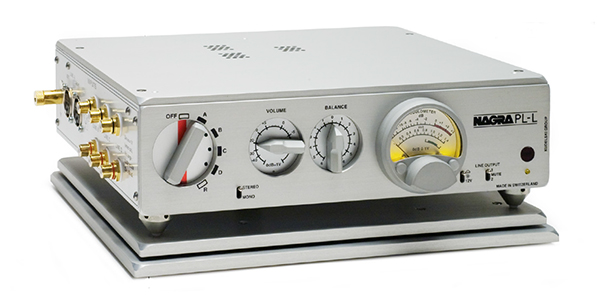 An upgrade that you do want to invest in
An upgrade that you do want to invest in Works well with MM and MC
Works well with MM and MC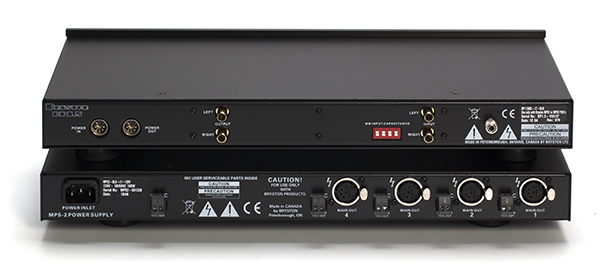 Getting down to business
Getting down to business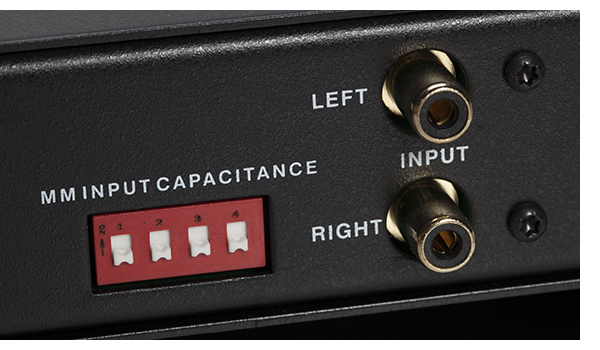 A variety of test-drives
A variety of test-drives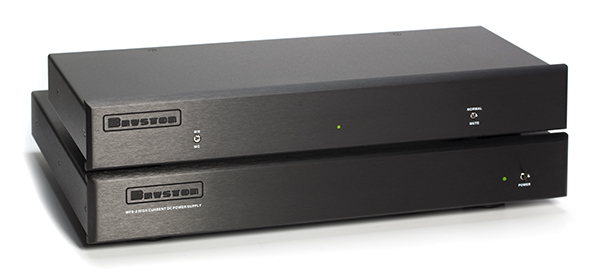 The Bryston BP1.5 phonostage and MPS-2 power supply
The Bryston BP1.5 phonostage and MPS-2 power supply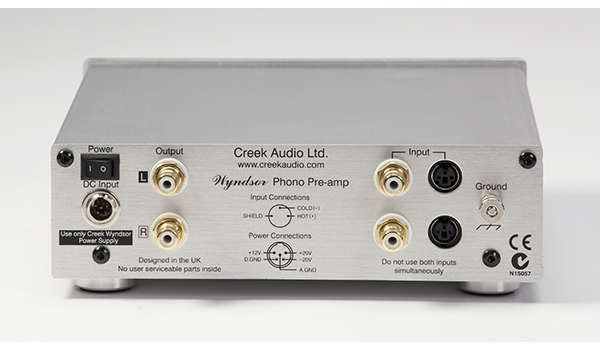 Very Versatile
Very Versatile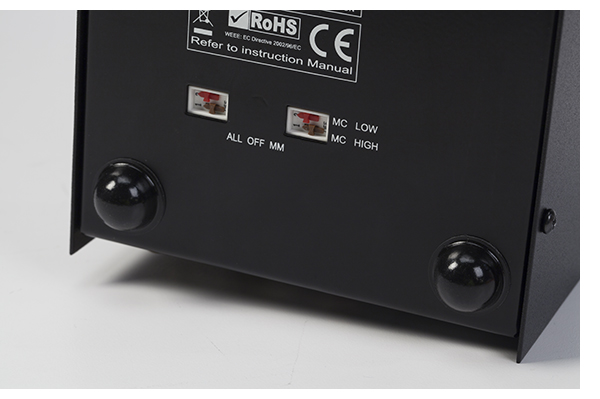 Staging the Phonostage
Staging the Phonostage Second Listen:
Second Listen: 